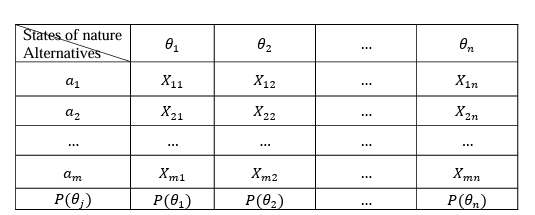Neutrosophic Vision of the Expected Opportunity Loss Criterion (NEOL) Decision Making Under Risk
Keywords:
Operations research; decision-making theory; decision making under risk; neutrosophic science; neutrosophic decision-making theory; neutrosophic missed opportunity criterionAbstract
One of the major challenges facing decision-makers at the present time is obtaining complete
information about the issue under study, due to the unstable conditions of the work
environment that are beyond the control of decision-makers, which requires them to reach an
optimal decision in light of these circumstances and fluctuations and to benefit from the data
that is collected. Collected by specialists to determine the appropriate probability distribution
corresponding to random cases of nature, here we are faced with the issue of making a
decision in the event of risk because the probability distribution is a distribution linked to the
data controlled by the conditions of the work environment, which entails a great risk.
Decision makers bear the responsibility of choosing the optimal decision that reduces This
risk is achieved and the greatest possible profit and the least possible loss are achieved. The
issue of decision-making becomes more complex as the number of events increases, and we
are in dire need of an ideal study of the issue that takes into account all the circumstances of
the work environment. The concept of missed opportunity is very useful in analyzing the
decision making under risk, after making the decision and the occurrence of events, the
decision makers may regret and wish they had chosen actions different from those they chose
at the beginning. To reduce the regret of the decision makers and minimize the expected lost
opportunity, researchers in the field of classical operations research presented the criterion
of the expected lost opportunity through which the decision can be determined. The ideal
with the least percentage of regret. In this research, we present a neutrosophic vision of the
expected opportunity loss criterion by taking the data of the issue under study. neutrosophic
values are ranges whose lowest limit expresses profit in the worst conditions, and only the
highest represents profit in the best conditions.
Downloads

Downloads
Published
Issue
Section
License
Copyright (c) 2024 Neutrosophic Sets and Systems

This work is licensed under a Creative Commons Attribution 4.0 International License.







